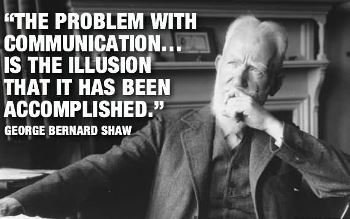Jeremie Averous's Blog, page 84
September 29, 2016
How to Formulate Powerful Deception-Busting Questions
Following up on our post ‘How to Spot Deception‘ and the book ‘Spy the Lie: How to spot deception the CIA way‘, a type of very powerful question is emphasized in the book. Powerful questions are always very useful because of the change they can cause. It is a tenet of coaching in particular.
 The bait question is of the form: “Is there any chance that anyone could have seen you doing this/being there?”
The bait question is of the form: “Is there any chance that anyone could have seen you doing this/being there?”
As the authors explain “You’ve asked a question that, like the previous one, put [the person] in processing mode. This time, your question is what we call a bait question. A bait question is a hypothetical question that operates on a psychological principle called a “mind virus.””
It is a tough question because it might require a lot of explanation and an unclear of hesitant answer can be very revealing.
As a tough question it requires a bit of context and preparation to be the most effective, still, it is extremely powerful. There are instances where this type of question will be very useful.

September 27, 2016
How to Spot Deception
I can only recommend the book ‘Spy the Lie: How to spot deception the CIA way‘ by Philip Houston & co. In spite of the title it is a book written by real professionals of deception identification and the approach is very interesting.
 Basically the approach is “in order to determine whether a person is being untruthful, we need to look and listen for the first deceptive behavior to occur within the first five seconds after that stimulus is delivered“.
Basically the approach is “in order to determine whether a person is being untruthful, we need to look and listen for the first deceptive behavior to occur within the first five seconds after that stimulus is delivered“.
Then in addition, to be valid this deceptive behavior needs to come as a cluster with a second deceptive behavior following closely. “A cluster is defined simply as any combination of two or more deceptive indicators, which, you’ll remember, can be either verbal or nonverbal. So a cluster might be one verbal and one nonverbal, or two nonverbals, or two verbals and one nonverbal, and so on. What do you do if there’s just a single deceptive behavior in response to the stimulus? You ignore it.”
The difficult side of the approach is that “The strategic principle is that if you want to know if someone is lying, you need to ignore, and thereby not process, truthful behavior“, because there will be a lot of truthful behavior at the same time as well.
Have a read of the book, it is great learning in everyday life.

September 24, 2016
How AI Powered Chatbots Start to Be Everywhere
The new trend seems to be Artificial-Intelligence powered chatbots. In an interesting experiment, a university professor replaced one of his assistants by such a chatbot. The students did not detect it and actually wanted to nominate it as the best assistant in the class! (see ‘Innovations
What happened when a professor built a chatbot to be his teaching assistant‘)
Actually it would be interesting to have a test or some kind of identification that would enable us to determine if we are interacting with a chatbot or a human. But we need to be aware that it will be increasingly the rule that our interface will be with robots. In 5 year time it might even be the majority of the customer service we will be facing. For sure that will produce sometimes astonishing results.

September 22, 2016
Why There is No Apparent Logic to be Expected From Human Behavior
While each of us (or most of us) do behave according to a certain inner logic, to a casual external observer it will often seem as if our actions defy any kind of logic.
 An irrational behavior with a possible internal rationality
An irrational behavior with a possible internal rationalityIn the excellent book ‘Spy the Lie: How to spot deception the CIA way‘, the authors explain that: “There’s only a casual relationship between human behavior and logic. And we’ve found that to absolutely be the case.
Human behavior doesn’t always conform to what seems sensible to us, and that what seems sensible to us isn’t necessarily valuable in evaluating how a person thinks or acts.”
This makes any kind of judgment on people’s behavior difficult. As explained in the book in certain situations, suspension of judgment is required. That is the case for example during coaching, or during interviews to determine trustworthiness.

September 20, 2016
What the Greatest Problem in Communication Is
“The greatest problem in communication is the illusion that it has been accomplished” —variously attributed to Georges Bernard Shaw or Daniel W. Davenport (who knows?).
 This is certainly an eternal truth and should hang as a reminder on all change managers desks and on the walls of all of those in charge of organizational transformation.
This is certainly an eternal truth and should hang as a reminder on all change managers desks and on the walls of all of those in charge of organizational transformation.
Communication needs to overflow, it is always too easy to convince oneself that it has been accomplished and stop communicating.
As a useful rule of thumb, repeat until people feed back that they have heard enough.

September 17, 2016
How Most People Sharing Links or Commenting Don’t Read the Posts
Since I am publishing a lot, I am aware that many times when people comment on my posts, they seem not to have read it. They react on the title, or on some idea more or less closely linked to the post topic.
 This is even confirmed when sharing links- according to studies, ‘6 in 10 of you will share this link without reading it, a new, depressing study says‘. Moreover, the study shows that viral effects can be created without anyone having read the original post! So much on the attractiveness of the picture or the video enclosed with the text to help through the click rate…
This is even confirmed when sharing links- according to studies, ‘6 in 10 of you will share this link without reading it, a new, depressing study says‘. Moreover, the study shows that viral effects can be created without anyone having read the original post! So much on the attractiveness of the picture or the video enclosed with the text to help through the click rate…
It is difficult in the Collaborative Age to read everything that is thrown to us. But we can maybe check first that what we are sharing makes sense. Another basic behavior rule that will slowly emerge and be taught to future generations maybe?

September 15, 2016
How Establishing Rituals Is an Essential Tool for Change
Establishing rituals is important for our effectiveness but it is also a way to establish change. If we want to change, we need to setup rituals. This will allow us to consistently implement the new approach.
 Rituals are not just routines or habits. They have a link to a higher purpose, which can be personal success or the success of the organization.
Rituals are not just routines or habits. They have a link to a higher purpose, which can be personal success or the success of the organization.
Setting up rituals as a way to change is true personally and also in organizations. The most effective change programs involve creating a set of new rituals (meetings, type of encounters, new process steps and meeting points etc) up to the point where it becomes a habit with purpose.
Purpose is very important here because it will justify the effort and always re-frame the actions taken with a higher level justification.
When do you establish the rituals that will allow you to change?

September 13, 2016
How Rituals Are Essential to Lower Stress and Enhance Creativity
Rituals in our lives are essential to keep us focused on what is really important, while removing a lot of thinking and keeping us in a certain comfort zone for part of the day.
 As Cate Stillman writes in her book ‘Body Thrive’, “When your day-to-day habits are simple and repetitive, you can enjoy amazing depth, connectedness, and success in other areas of your life.”
As Cate Stillman writes in her book ‘Body Thrive’, “When your day-to-day habits are simple and repetitive, you can enjoy amazing depth, connectedness, and success in other areas of your life.”
Steve Jobs was famous for wearing always the same clothes so that he did not have to think about which ones to choose from in the morning.
As I travel a lot I find it tougher to hold on to some rituals however I still have some, like the way I prepare my luggage and where I put things.
Establish rituals in your lives and lower your stress while increasing your effectiveness!

September 10, 2016
How It Is Important to Remain Visible and Familiar
Following up on our previous post ‘Why Pure Performance Does Not Guarantee Success‘, one essential element is visibility.
 Keeping visible is hugely important. As Jeffrey Pfeffer writes “The simple fact is that people like what they remember— and that includes you! In order for your great performance to be appreciated, it needs to be visible. But beyond visibility, the mere exposure research teaches us that familiarity produces preference. Simply put, in many cases, being memorable equals getting picked.”
Keeping visible is hugely important. As Jeffrey Pfeffer writes “The simple fact is that people like what they remember— and that includes you! In order for your great performance to be appreciated, it needs to be visible. But beyond visibility, the mere exposure research teaches us that familiarity produces preference. Simply put, in many cases, being memorable equals getting picked.”
Familiarity adds a layer of emotion on top of visibility, leading to being memorable.
This also explains, for example, why far-away assignments are often not conducive to promotions compared to assignments at headquarters. Or why, in terms of business development, familiarity is an essential objective of relationship development.
Stay visible, develop familiarity and become memorable. And then get picked!

September 8, 2016
Why Pure Performance Does Not Guarantee Success
In his highly recommended book ‘Power: Why Some People Have It—and Others Don’t‘, Jeffrey Pfeffer insists that “performance doesn’t guarantee success”. And this is true bith on a personal and on a professional level. It also works for companies – even great products may not sell!
 Success requires something more than just great performance. It requires marketing skills and political savvy-ness to be able to navigate within the organization, the market, the institutional setup. Unfortunately this may also lead those that have those extra skills to be very successful without necessarily the performance attached to it.
Success requires something more than just great performance. It requires marketing skills and political savvy-ness to be able to navigate within the organization, the market, the institutional setup. Unfortunately this may also lead those that have those extra skills to be very successful without necessarily the performance attached to it.
As the theory of constraints also shows, local performance in an interlinked system with other entities that are not performing will not save the entire system. It is a waste (the myth of the hero does not exist)
Thus, the fact that pure performance is not the first deciding aspect is a reality that needs to be taken into account in all our endeavors. We also have to hone our skills of influencing, managing our bosses and clients, and in general, marketing our abilities. A good balance will create success.
What about you?


 While we are probably still miles away from a chatbot that can emulate a real speaking conversation, instant messaging chatbots seem to exist quite successfully in a number of instances. This removes clerical work for sure and we need to get used to it. In all instances more complex requests need to be handled by humans who are unburdened by the menial requests.
While we are probably still miles away from a chatbot that can emulate a real speaking conversation, instant messaging chatbots seem to exist quite successfully in a number of instances. This removes clerical work for sure and we need to get used to it. In all instances more complex requests need to be handled by humans who are unburdened by the menial requests.

